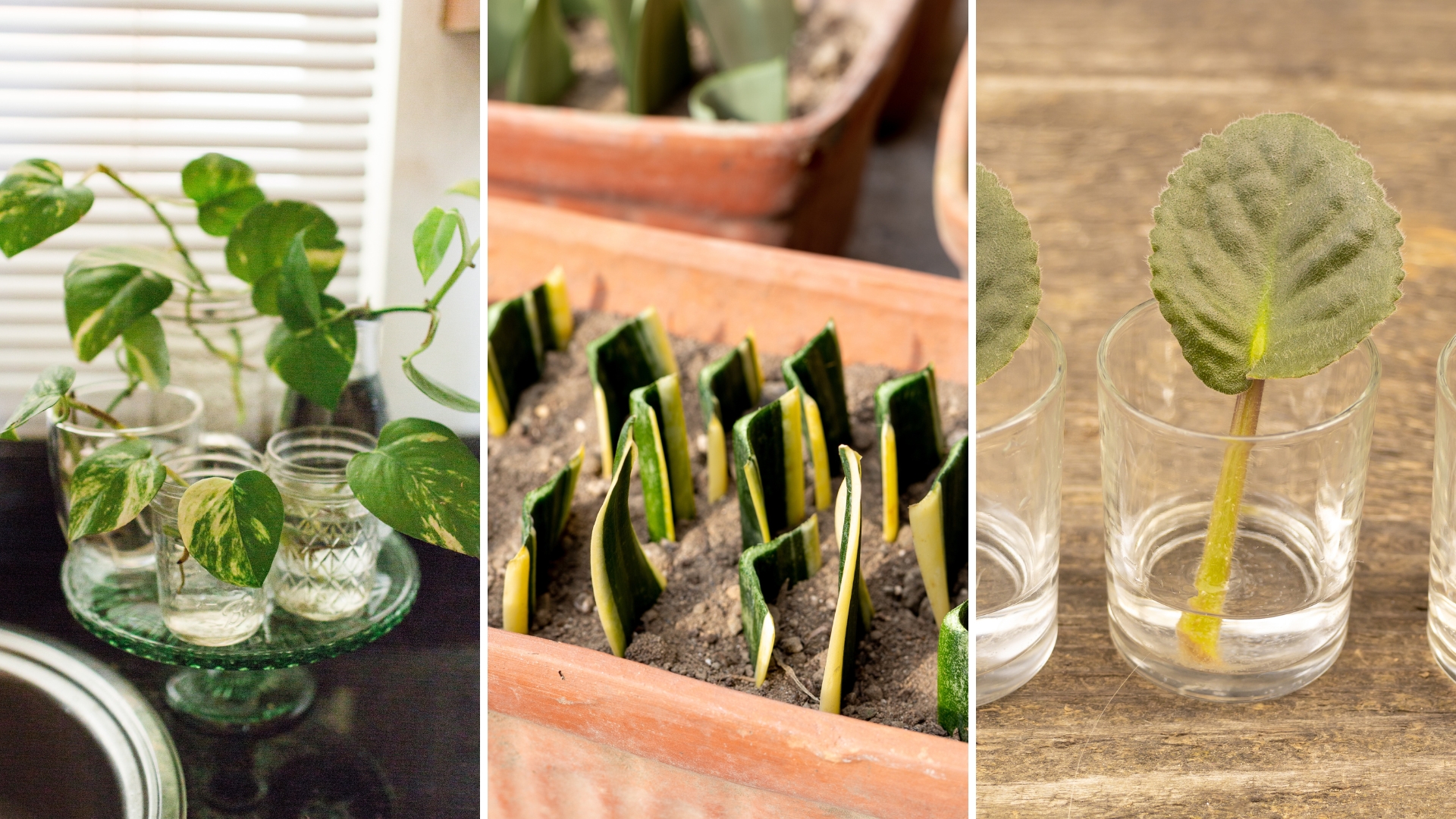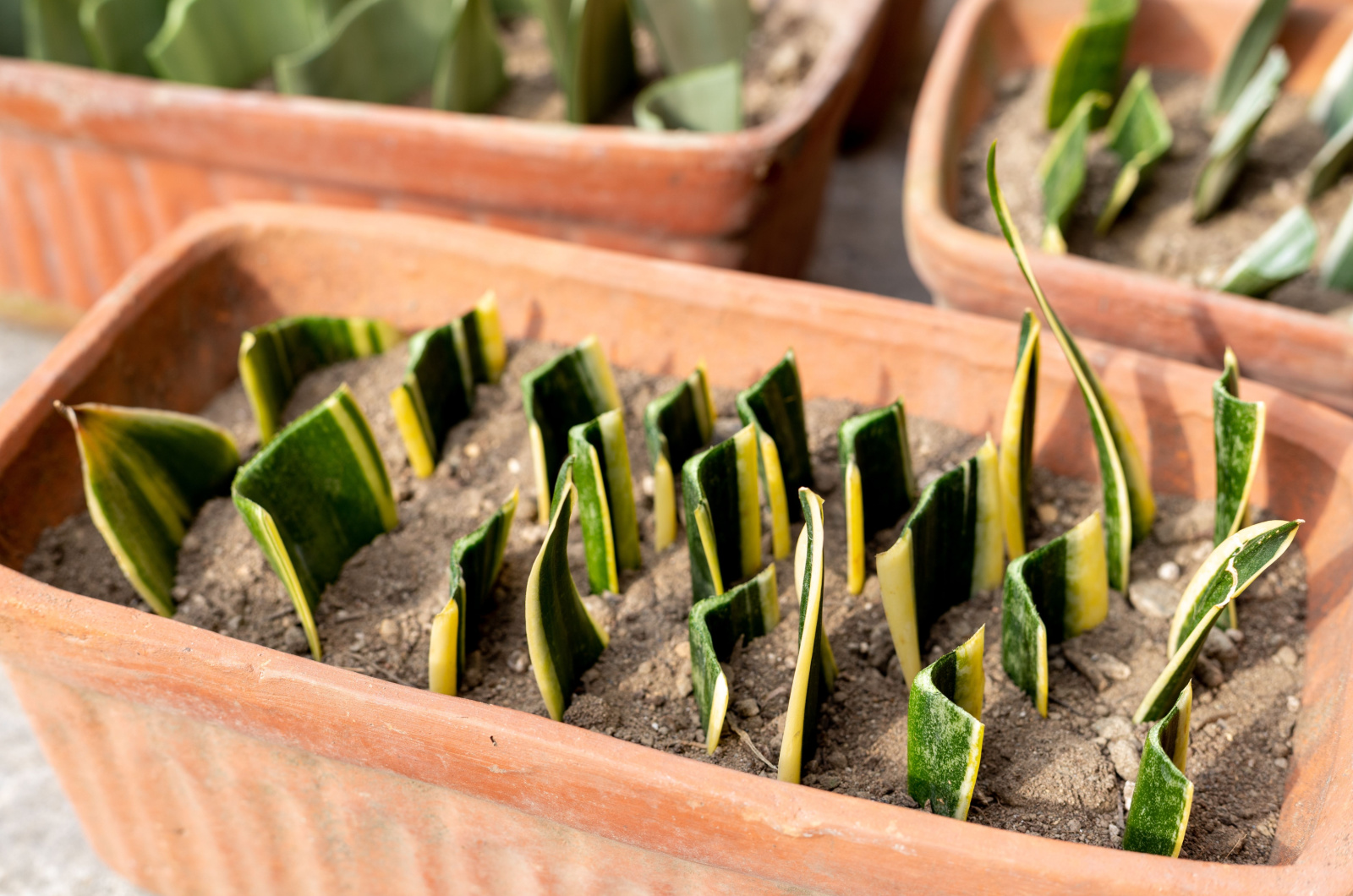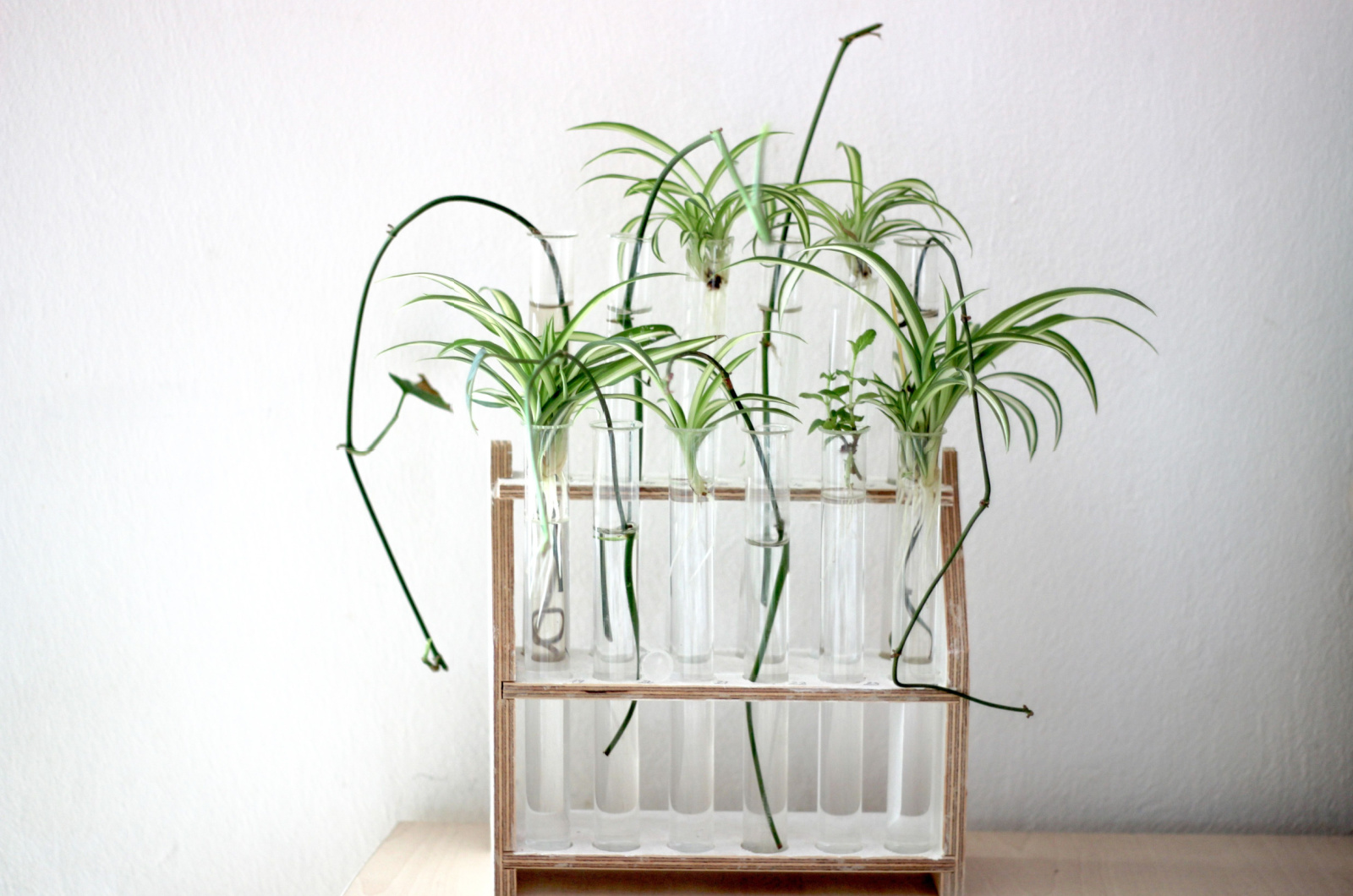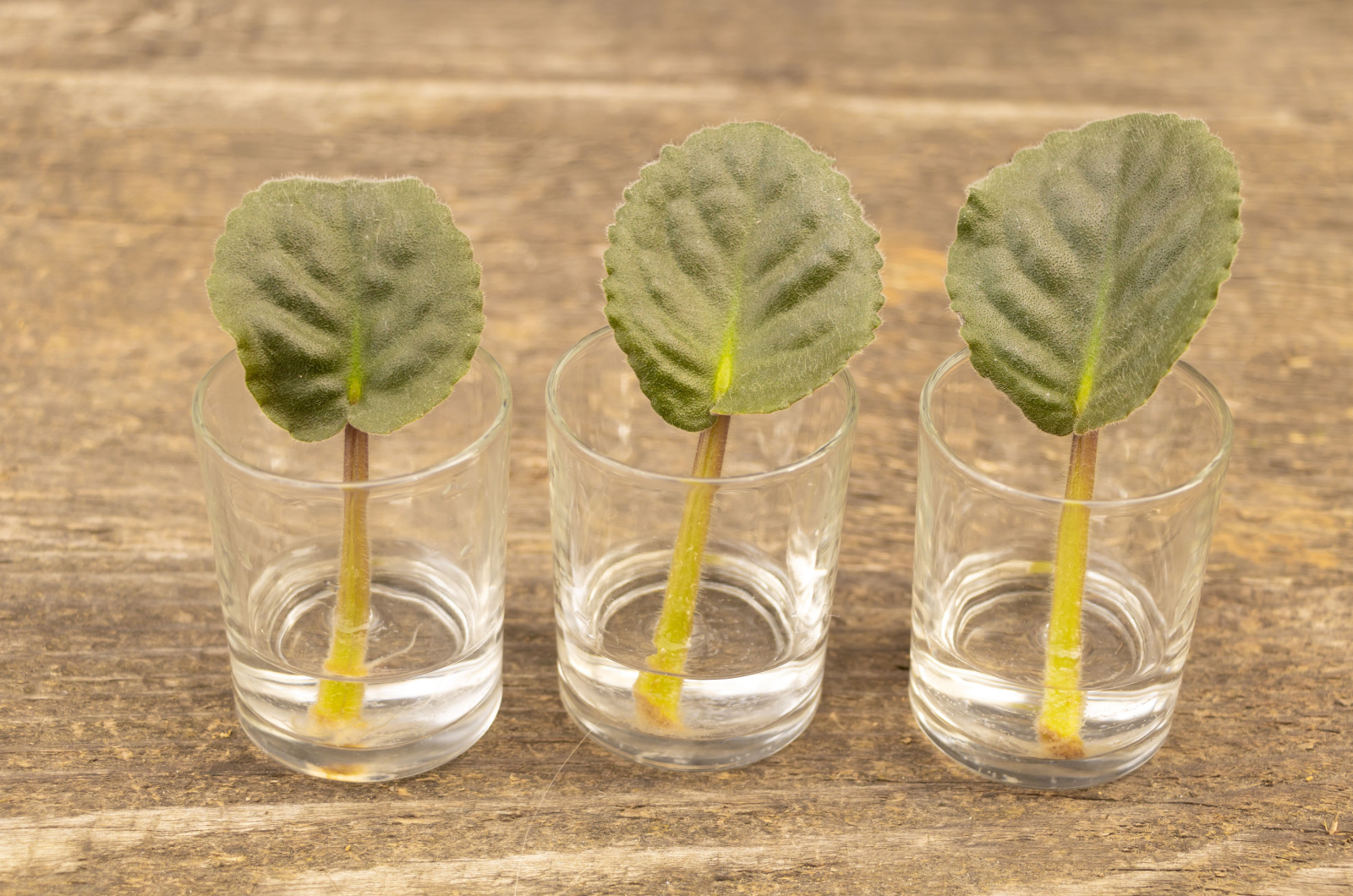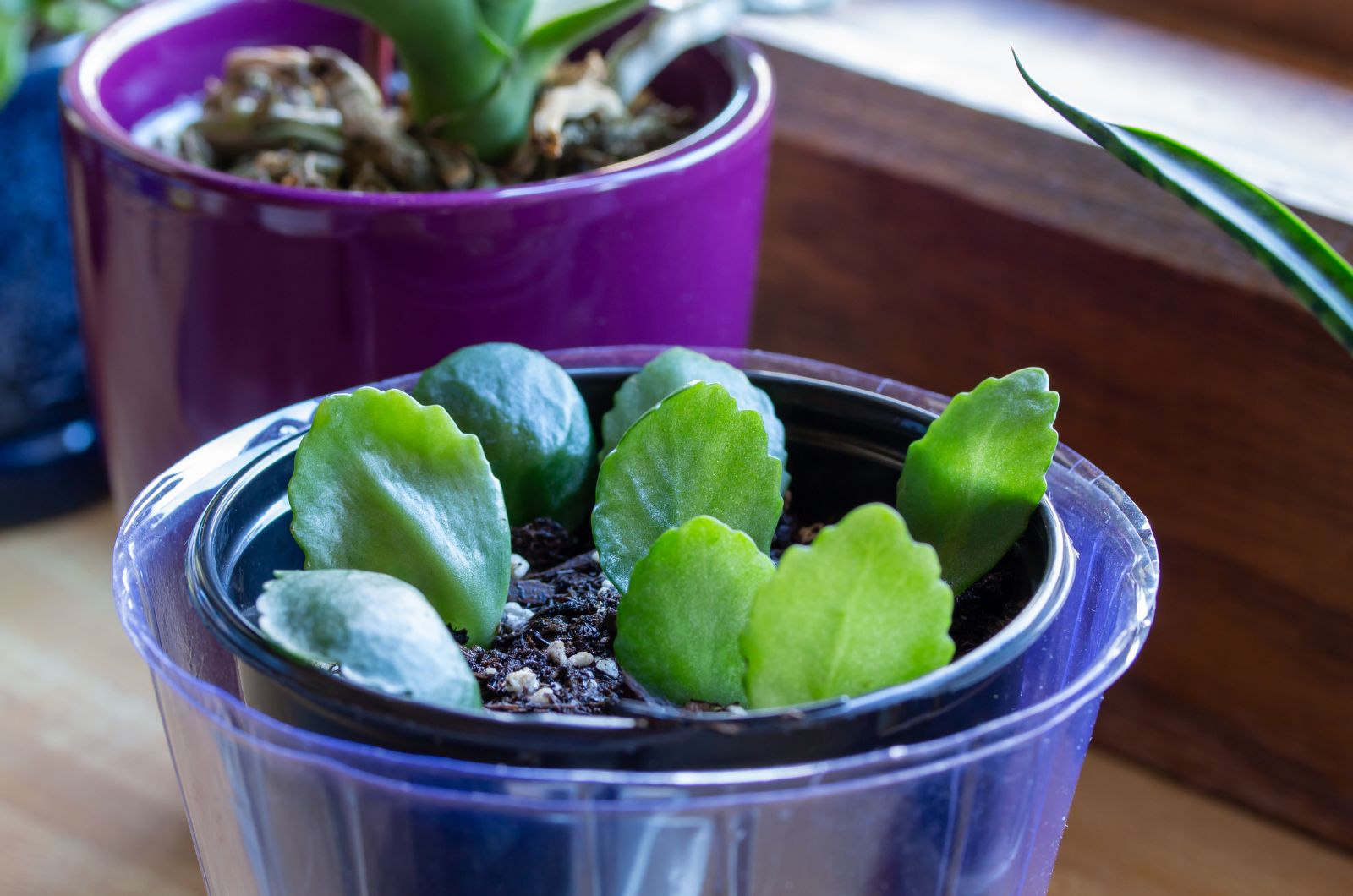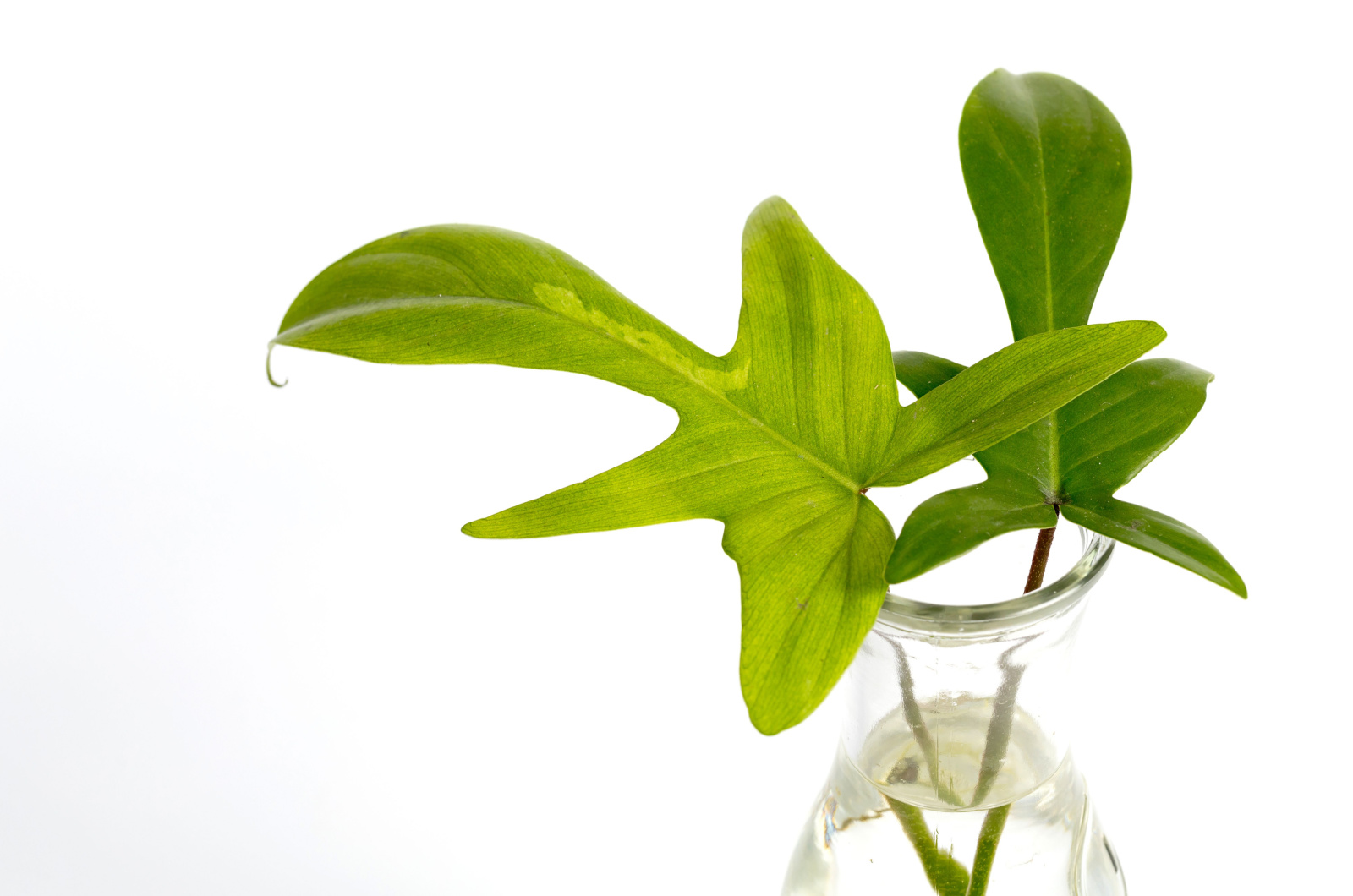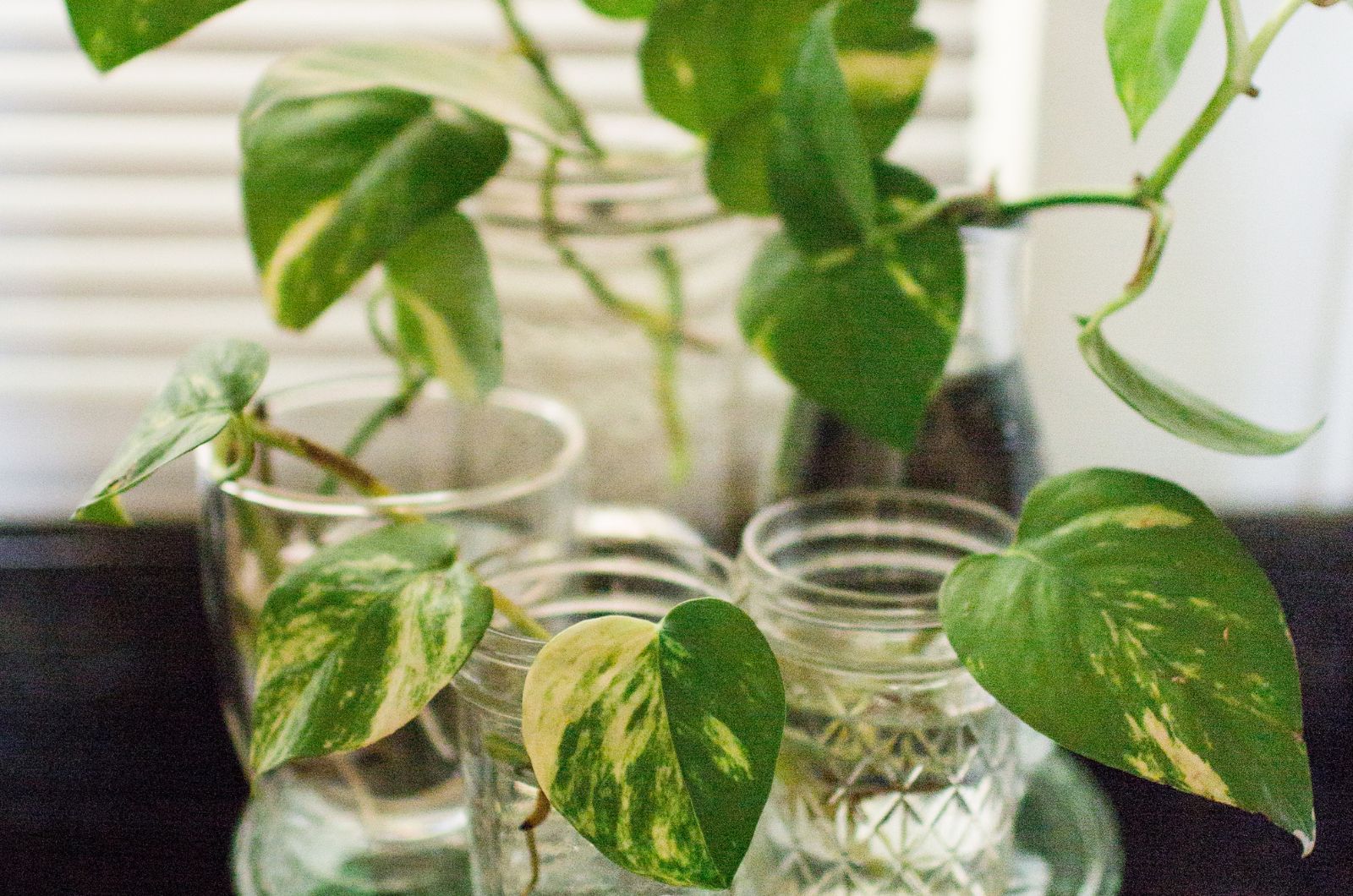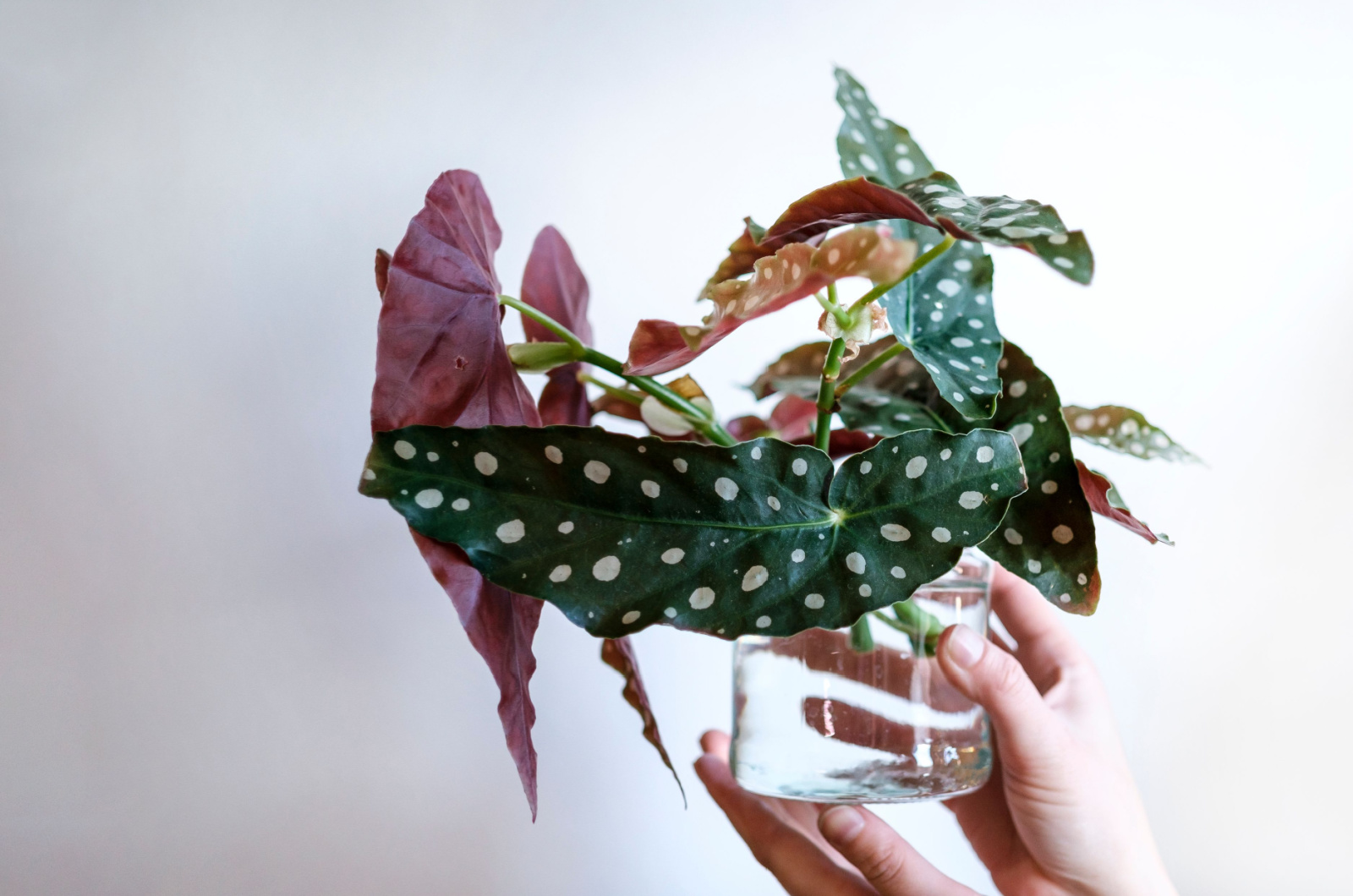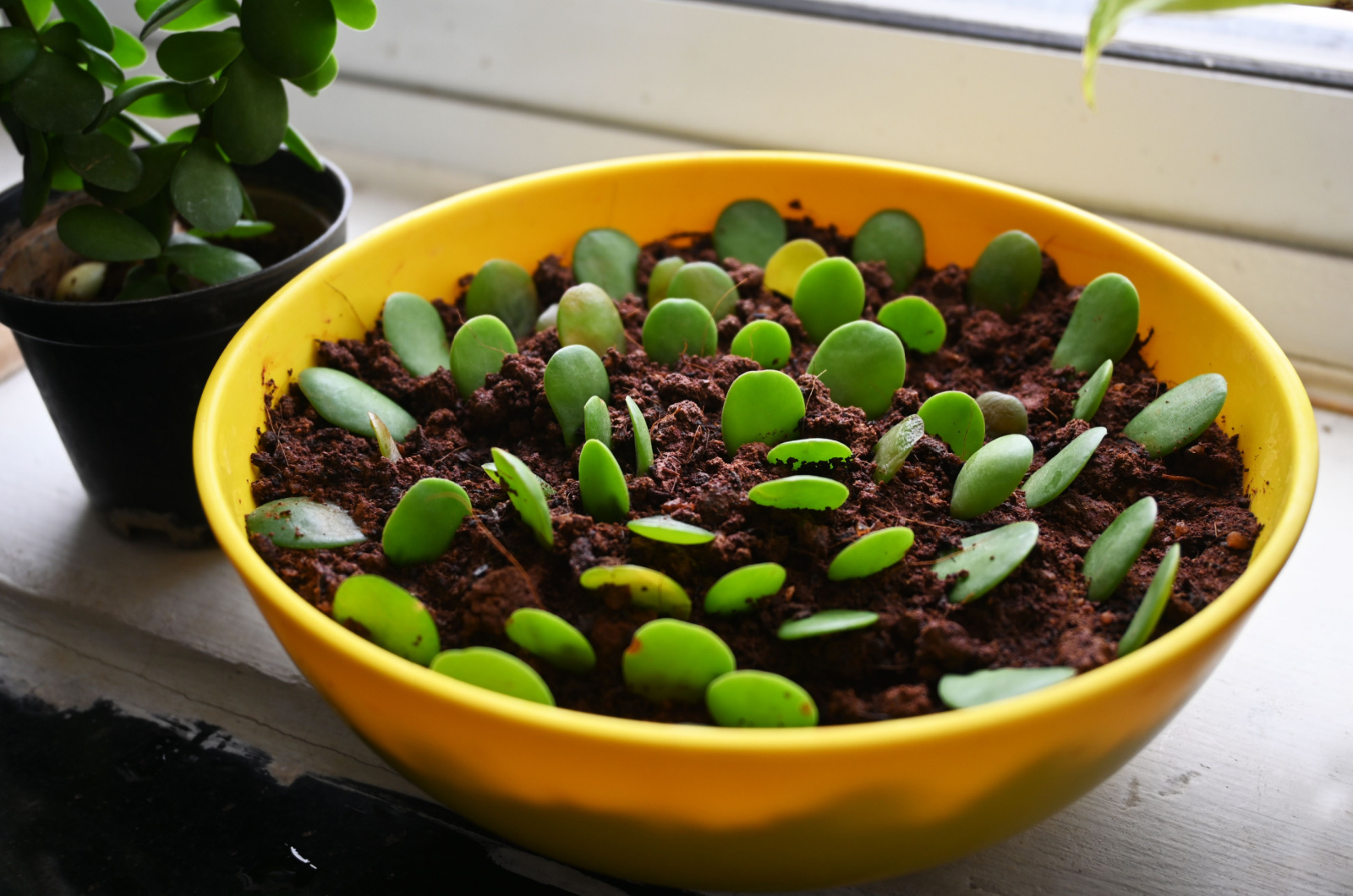Getting new plants is definitely my favorite part of gardening. But instead of buying new plants constantly, it’s always better to propagate the existing ones!
There are so many captivating indoor plants that can be propagated in more than one way, and you only need a leaf or two.
So never throw the leaves of the plants I’m about to show you! They’ll easily grow and transform into lush and stunning plants!
Let’s get started!
1. Snake Plant
If you’re a beginner and have a snake plant, don’t miss the opportunity to propagate it. The easiest way to do it is to cut off a single leaf and divide it into a few sections.
Plant each snake plant section in a free-draining growing substrate and mist the soil. The cuttings will generate new roots, and once they show resistance when you gently tug them, transplant them into a new pot.
Another way to propagate snake plants is through division, and this method is perfect for those who need to repot these plants. Simply divide the rootball into a few sections and plant each separately.
Dracaena plants enjoy bright indirect light and you should water them when their soil dries out entirely.
2. Spider Plant
One of the plants you can easily propagate in water using only the leaves is the stunning spider plant.
These houseplants generate offshoots that are typically found at the end of the arching stems. Remove the offshoots and plant them separately in a growing substrate or root them in clean and fresh water.
Once the offshoots develop the roots, plant them in a new pot filled with quick-draining soil and keep them in bright indirect light.
3. African Violet
Captivating African violets are super easy to multiply and you don’t have to be a master gardener to do it.
Choose a well-developed leaf from your mature African violet, make a diagonal cut, immerse the cut section in rooting hormone, and plant it in a small pot.
When the cuttings produce new roots, repot your African violets and keep them in filtered sunlight.
4. Kalanchoe
If you have any Kalanchoe varieties, you can easily expand your collection by propagating them.
You can use stem cuttings to get new Kalanchoes but I prefer propagating them through leaves. Simply take a robust Kalanchoe leaf and place it into a quick-draining growing substrate.
Make sure to provide your Kalanchoe with bright indirect light and water it only when its soil is completely dry because they’re sensitive to waterlogging.
5. Philodendron
Propagating the Philodendron birkin or any other variety is straightforward and doesn’t require any special equipment. Similarly to Kalanchoes, Philos can be multiplied through stem cuttings or leaves.
The easiest way is to cut off a healthy Philodendron leaf, put it in clean and fresh water, and transplant it to the soil when the roots are a few inches long.
Keep in indirect light and never allow the soil of your Philodendron to dry out completely. Only add water when the top two inches dry out.
6. Pothos
Pothos is a plant you’ll see in almost every household, and they’re renowned for their stunning vines and low care requirements.
To propagate your pothos, you’ll need to take some stem cuttings with a few leaves attached. Put the pothos cuttings in jars or clear vases filled with clean and fresh room temperature water.
When the roots form, plant the cuttings in hanging baskets filled with free-draining soil. These plants aren’t finicky over light conditions and they’ll thrive wherever you put them, but make sure the soil is always moist.
7. Begonia
Propagating Begonias through leaf cuttings is an easy and zero-cost way to expand your collection.
Take a few smaller containers, add fast-draining growing substrate, and plant Begonia leaf cuttings separately.
Put your new Begonias in indirect light and keep the soil lightly moist, but never waterlogged, because they’re susceptible to root rot disease.
8. Jade Plant
Jade plants are absolute winners when it comes to propagation. To get new Jade plants, remove a healthy leaf and leave it to callous over for a day or two.
Plant the Crassula leaf in quick-draining soil, ensure bright indirect sunlight, and water only when the growing substrate dries out entirely.
That’s it! These 8 plants are all low-maintenance, so use the opportunity to propagate them and watch them thrive!

